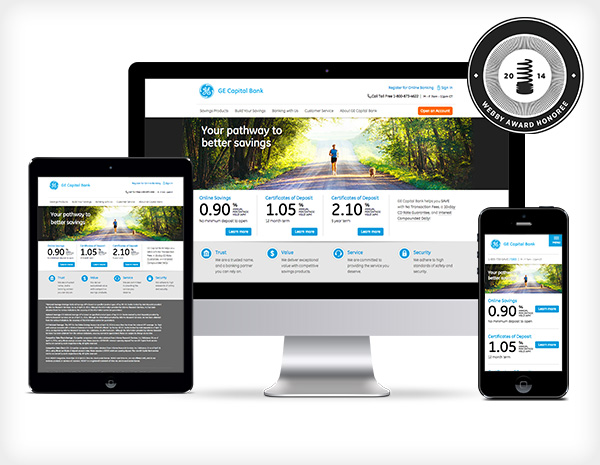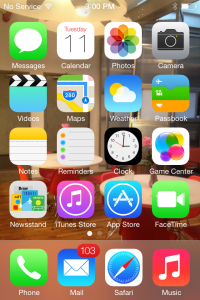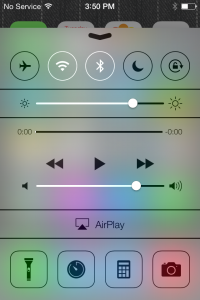
New York — April 11, 2014 – Fusebox was proud to announce today that the agency has been honored for its work on the GE Capital Bank Website (https://www.gecapitalbank.com) in the “Financial Services/Banking Websites” category in the 18th Annual Webby Awards. Hailed as the “Internet’s highest honor” by The New York Times, The Webby Awards, presented by the International Academy of Digital Arts and Sciences (IADAS), is the leading international award recognizing excellence on the Internet. The IADAS, which nominates and selects The Webby Award Winners, comprises web industry experts, including media mogul Arianna Huffington, Skype CEO Tony Bates, Mozilla CEO and Chair Mitchell Baker, Instagram co-founder Kevin Systrom, mobile-phone inventor Martin Cooper, and the Creator of the GIF Steve Wilhite.
“Honorees like Fusebox are setting the standard for innovation and creativity on the Internet,” said David-Michel Davies, Executive Director of The Webby Awards. “It is an incredible achievement to be selected among the best from the 12,000 entries we received this year.”
The 18th Annual Webby Awards received 12,000 entries from over 60 countries and all 50 states. Among the 12,000 entries submitted, fewer than 15% experienced the privilege of being deemed an Official Honoree.
Fusebox
Fusebox is an independent agency focused on the digital customer experience. Founded in 1999, and located in New York City, Fusebox specializes in Retail Banking and Financial Services, delivering expertise in business strategy, user experience design, marketing, programming and mobile development.
About The Webby Awards
Hailed as the “Internet’s highest honor” by The New York Times, The Webby Awards is the leading international award dedicated to honoring excellence on the Internet, including Websites, Interactive Advertising & Media, Online Film & Video, Mobile & Apps, and Social. Established in 1996, The Webby Awards received nearly 12,000 entries from all 50 states and over 60 countries worldwide this year. The Webby Awards is presented by the International Academy of Digital Arts and Sciences (IADAS). Sponsors and Partners of The Webby Awards include: Microsoft, Dell, Vitamin T, MailChimp, Engine Yard, Funny or Die, AdAge, Percolate, Mashable, Business Insider, Internet Week New York and Guardian News and Media. Continue reading

 I like the minimalist approach, but this feels a little under designed. I like the new uniform design across all the apps, as the inconsistency always bothered me—now they feel uniform, like a suite. One new inconsistency I noticed is the Notifications panel is solid, but the Control Center panel is very transparent—too transparent, in my opinion.
I like the minimalist approach, but this feels a little under designed. I like the new uniform design across all the apps, as the inconsistency always bothered me—now they feel uniform, like a suite. One new inconsistency I noticed is the Notifications panel is solid, but the Control Center panel is very transparent—too transparent, in my opinion.













